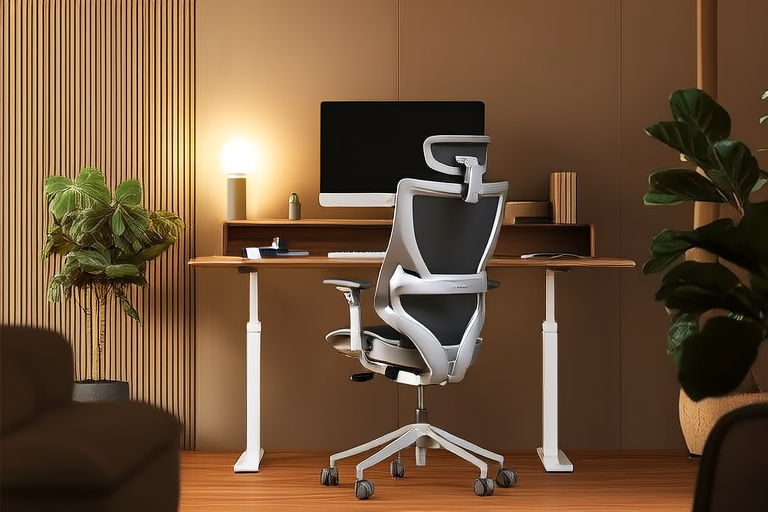How Ergonomic Adjustments Can Transform Your Office into a Comfort Hub
Introduction: The Importance of Ergonomics in the Modern Workspace
In today’s digital age, many professionals spend hours each day sitting at their desks. Prolonged periods of inactivity can lead to discomfort, fatigue, and even long-term health issues like back pain, neck strain, and repetitive strain injuries. Proper ergonomic adjustments not only enhance comfort but also boost productivity and focus. By optimizing your workspace, you can create an environment that supports both physical well-being and mental clarity. This article will guide you through essential ergonomic adjustments to transform your office into a comfortable and efficient work hub.
Understanding Ergonomics: What It Is and Why It Matters
Ergonomics is the science of designing and arranging things people use so that the people and things interact most efficiently and safely. In the context of an office setting, this means adjusting your workspace to fit your body’s natural movements and postures. Key areas include chair height, monitor placement, keyboard and mouse positioning, and foot support. These adjustments help reduce stress on muscles, joints, and tendons, minimizing the risk of injury and enhancing overall comfort.
Key Components of an Ergonomic Workspace
Chair Height and Posture
Your chair plays a crucial role in maintaining proper posture. Ensure that your chair allows you to sit with your feet flat on the floor or on a footrest, with knees at a 90-degree angle. Your hips should be slightly higher than your knees, and your lower back should have adequate support. Adjustable chairs with lumbar support are ideal for promoting healthy spinal alignment.
Monitor Placement
The position of your computer screen is equally important. Ideally, the top of your monitor should be at eye level when you’re seated. This prevents you from straining your neck to look up or down. Additionally, the screen should be positioned about an arm’s length away to minimize eye strain. Tilt the screen slightly downward to avoid glare from overhead lights.
Keyboard and Mouse Positioning
Proper keyboard and mouse placement helps prevent wrist strain and carpal tunnel syndrome. Your keyboard should be placed directly in front of you, allowing your arms to rest naturally at your sides. The mouse should be within easy reach, positioned parallel to the keyboard. Consider using a negative tilt keyboard or a split keyboard for added comfort.
Foot Support
Feet that aren’t properly supported can lead to poor circulation and discomfort. If your feet don’t touch the ground while seated, consider using a footrest. This simple addition ensures that your legs are supported and reduces strain on your lower back.
Practical Tips for Creating an Ergonomic Office Environment
Implementing ergonomic changes doesn’t require a complete overhaul of your workspace. Here are some actionable steps you can take today:
Step-by-Step Guide to Setting Up an Ergonomic Desk
- Adjust Your Chair: Begin by ensuring your chair is at the correct height. Sit with your feet flat on the floor or on a footrest. Adjust the backrest to provide adequate lumbar support.
- Position Your Monitor: Place your monitor directly in front of you, with the top of the screen at eye level. Ensure there’s enough space between your eyes and the screen to avoid eye strain.
- Arrange Your Keyboard and Mouse: Position your keyboard and mouse so that your arms rest comfortably at your sides. Keep your wrists straight and your elbows at a 90-degree angle.
- Add a Footrest: If necessary, add a footrest to ensure your feet are supported. This will help maintain proper posture and improve blood flow.
Ergonomic Accessories That Can Make a Difference
- Ergonomic Chairs: Look for chairs with adjustable height, lumbar support, and armrests.
- Monitor Stands: Elevate your monitor to the correct height if your desk isn’t tall enough.
- Footrests: Provide additional support for your feet if they don’t touch the ground.
- Keyboard and Mouse Mats: Use ergonomic mats to keep your hands and wrists in a neutral position.
Case Studies: Real-Life Examples of Ergonomic Improvements
Consider the following real-life scenarios where ergonomic adjustments made a significant difference:
Case Study 1: A Programmer with Carpal Tunnel Syndrome
A software developer experienced chronic wrist pain due to prolonged keyboard and mouse use. After adjusting his desk setup—raising his chair, lowering his monitor, and using an ergonomic keyboard and mouse—he noticed a marked improvement in his comfort levels. His productivity increased as he no longer had to take frequent breaks to stretch and relieve discomfort.
Case Study 2: An Office Worker with Back Pain
An office worker who spent long hours sitting in a poorly adjusted chair began experiencing severe back pain. She introduced several ergonomic changes, including purchasing an adjustable chair with lumbar support, raising her monitor to eye level, and adding a footrest. Within weeks, she reported reduced back pain and improved focus throughout the day.
Conclusion: Taking Action for a Healthier Workspace
Creating an ergonomic office environment is a worthwhile investment in your health and productivity. By making small, strategic adjustments to your workspace, you can significantly reduce discomfort and prevent long-term health issues. Start by assessing your current setup and identifying areas for improvement. Incorporate ergonomic accessories and follow the step-by-step guide provided. Remember, the key is consistency—regularly check your posture and make adjustments as needed. With these simple changes, you’ll transform your office into a comfortable and productive workspace.
Actionable Steps:
- Assess Your Current Setup: Take note of any discomfort or strain.
- Make Necessary Adjustments: Follow the guidelines outlined in this article.
- Invest in Ergonomic Accessories: Enhance your comfort with quality tools.
- Stay Consistent: Regularly review and adjust your workspace as needed.
By prioritizing ergonomics, you’ll not only feel better but also work more efficiently. Embrace these changes and enjoy the benefits of a healthier, more comfortable work environment.
